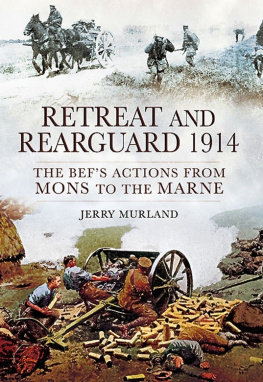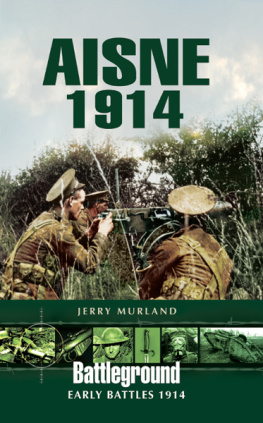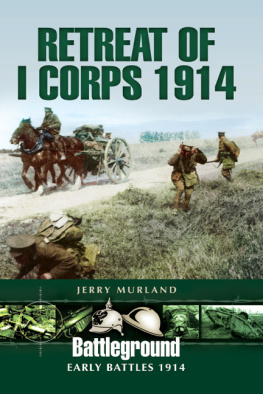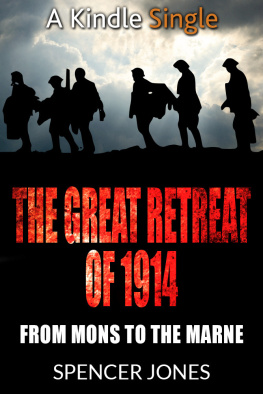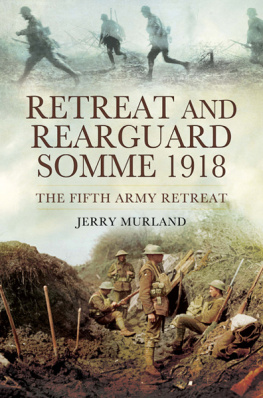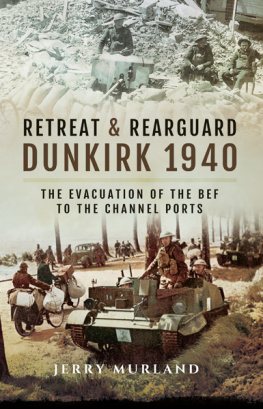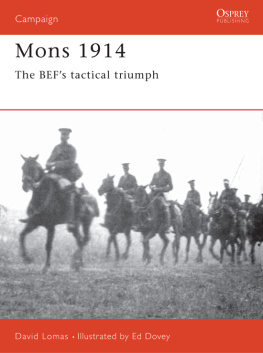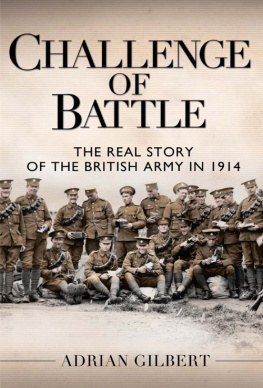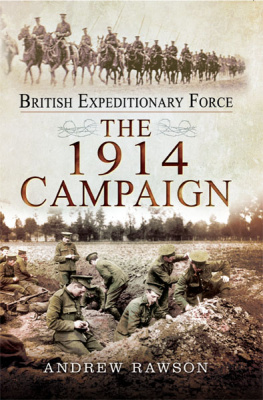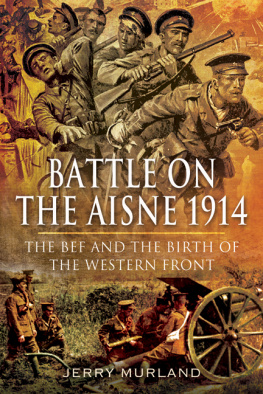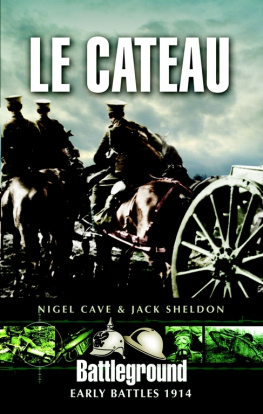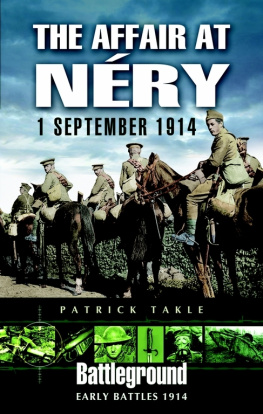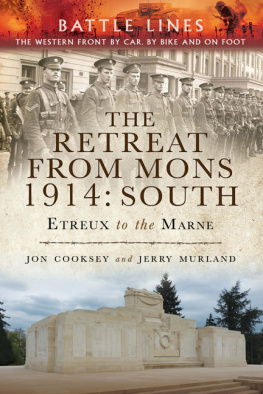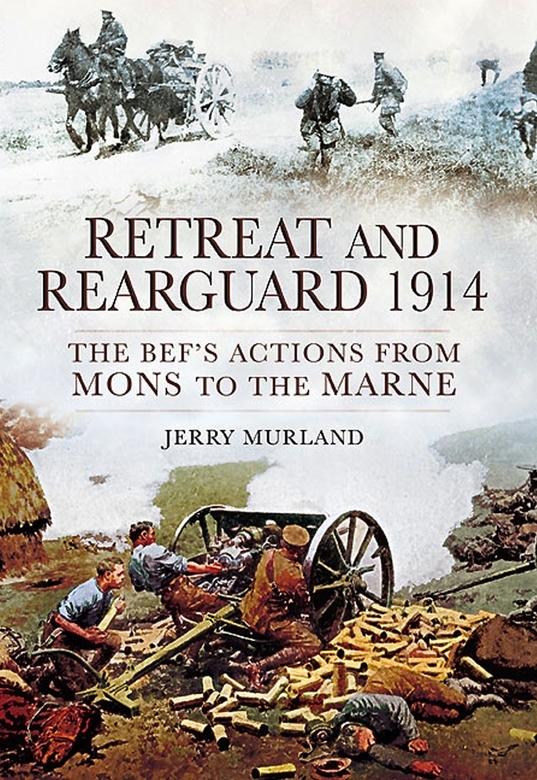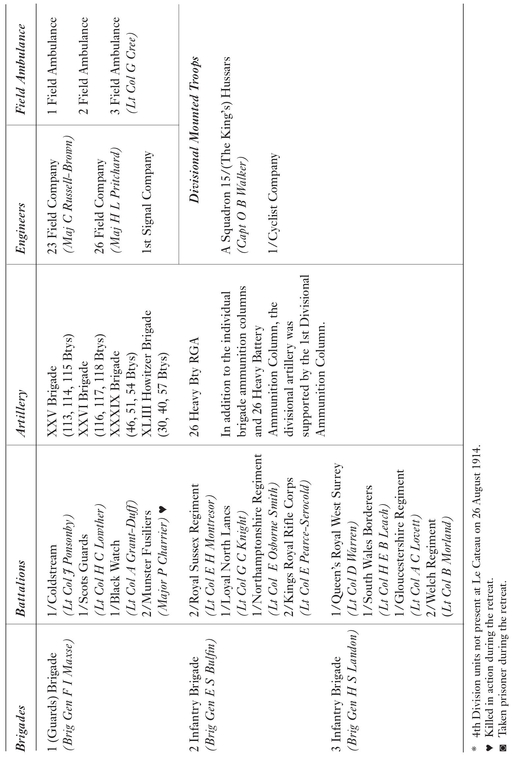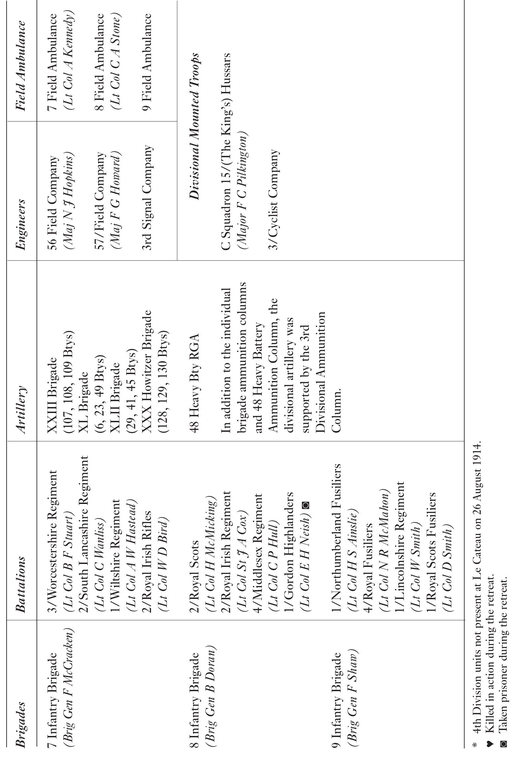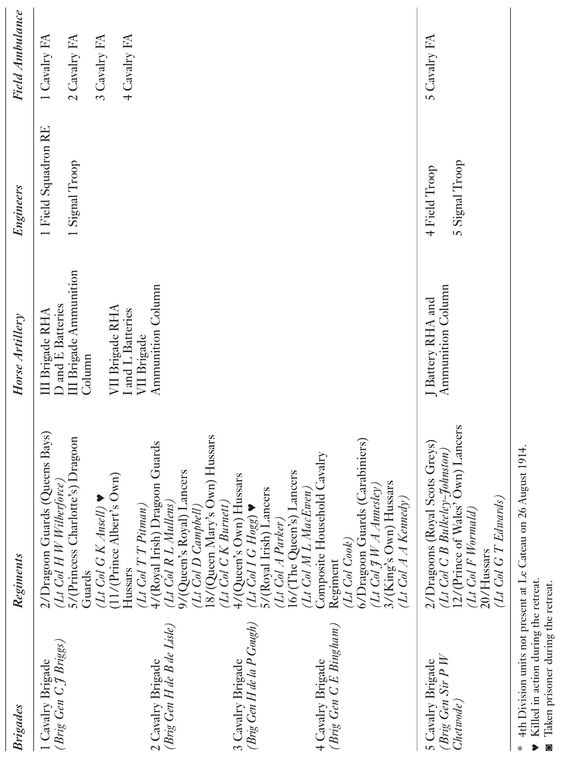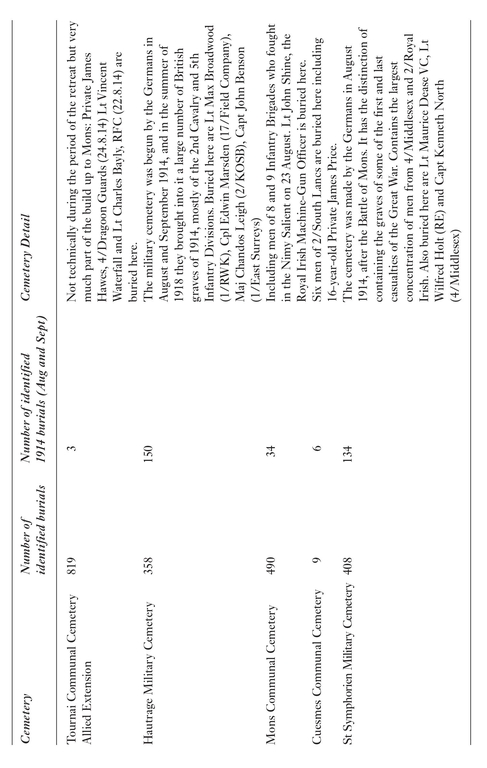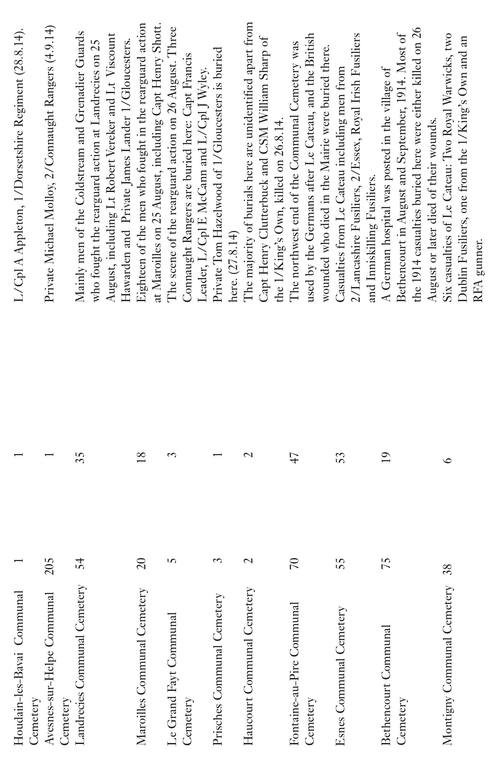Acknowledgements
I owe a great debt of gratitude to the men of the retreat who chronicled their experiences and left them for future generations to read. Without their observations and accounts of the two weeks of the retreat this book would have been impossible to write. In tracking down those accounts I must thank the late Professor Richard Holmes and Major Stewart Sampson, Toby Helm for permission to quote from Cyril Helms diary, the Institution of the Royal Engineers for permission to quote from the RE Journal, the Imperial War Museum, the National Archives and the Leeds University Archive. I must also record my gratitude to Mark Whyman for his help and assistance with locating the Pennyman diary and the National Trust for their kind permission to publish the photograph of James Pennyman. James Pennymans photographs which he took during the retreat are published with the permission of the Teesside Archive. The photographs of Cyril Helm were supplied by his daughter Caroline Price and those of Mons and St Symphorien by David Rowland. Patricia Godsell very kindly gave permission for the photograph of Kenneth Godsell to be published.
It would have been difficult to write an account of the retreat without following in the footsteps of the men who took part. To those who accompanied me in 2010 David Rowland, Tom Waterer and Paul Webster I give thanks for their patience in what proved to be an enlightening five days that began at Mons and ended at Rozoy en Brie, albeit in considerably more comfort than those who undertook the journey in 1914. In particular I must thank Yvon Debuire who welcomed us into his home at Nry and spent a day with us exploring the battlefields of the three rearguard actions of 1 September. He has also given permission to publish the photographs of his house at Nry and the estaminet at Vaucelles from his collection. Thanks must go also to Rebecca Jones at Glory Designs in Coventry who has once again produced some first class maps and made a number of design suggestions that have improved my initial sketches considerably.
Finally I must register my thanks to the members of the Great War Forum on the Long Long Trail website who have assisted me considerably with their expertise and personal knowledge and to Jon Cooksey, my editor, for his encouragement and assistance.
In all instances every effort has been made to trace the copyright holders where any substantial extract is quoted. The author craves the indulgence of literary executors or copyright holders where these efforts have so far failed.
Appendix 1
BEF Order of Battle August 1914
(Excluding some support units)
I Corps Lieutenant General Sir Douglas Haig
1st Division General Office Commanding Major General S H Lomax
2nd Division General Officer Commanding Major General C C Monro
II Crops Sir Horace Smith-Dorrien (after 17 August 1914)
3rd General Officer Commanding - Major General H I W Hamilton
5th Division General Officer Commanding Major General Sir C Ferfusson
III Corps V General W P Pulteney (formed in France on 31 August 1914) 4th Division General Officer Commanding Major General G DO Snow (Lanced in France on 22/23 August 1914)
19 Infantry Brigade (formed from lines of communication troops at Valenciennes on 22 August)
| General officers commanding | Battalions | Background |
|---|
| Initially the brigade was under the independent command of Major General L G Drummond. Lieutenant Colonel B E Ward assumed command of the brigade after Drummond was wounded on 27 August, relinquishing command on 3 September 1914, when Brig Gen F Gordon was appointed. | 1/Devonshire Regiment | Infantry brigades were generally deployed as part of an infantry division. However the role of 19 Brigade in August 1914 was to hold key towns and bridges along the route which connected the BEF to its supply bases on the coast. Hence the term lines of communication. At Mons for example, 1/Middlesex was ordered to hold bridges and locks over the canal in anticipation of the general advance. In this manner it became embroiled in the retreat. On 25 August the brigade was called upon to support the cavalry near Haussy before moving on to Solesmes and Le Cateau. At Le Cateau, the brigade was used on the right flank and was in action with 2/Suffolks on the Montay Spur. |
| (Lt Col G M Gloster) |
| 2/Royal Welch Fusiliers |
| (Lt Col D Radcliffe) |
| 1/Cameronians |
| (Lt Col P R Robertson) |
| 1/Middlesex Regiment |
| (Lt Col B E Ward) |
| 2/Argyll and Sutherland Highlanders |
| (Lt Col H P Moulton-Barrett) |
| However, although it remained independent as such, it served as reinforcement troops for the remainder of the retreat and was later attached to 6th Division |
| The brigade continued in this role until May 1915 when it finally found a permanent home with the 27th Infantry Division. |
Cavalry Corps Major General E H Allenby
Appendix 2
The Cemetery Trail
T he graves of the men of the BEF who fought at Mons and during the subsequent retreat are scattered along the 200 mile retirement that ended south of the Marne. The great tragedy in many of these cemeteries is the number of unidentified graves of men whose name will never stand above them. For more precise information on the location of each cemetery visit the Commonwealth War Graves Commission website at: www.cwgc.org. The cemeteries listed are in approximate geographical order, beginning at Tournai and finishing at Verberie.

